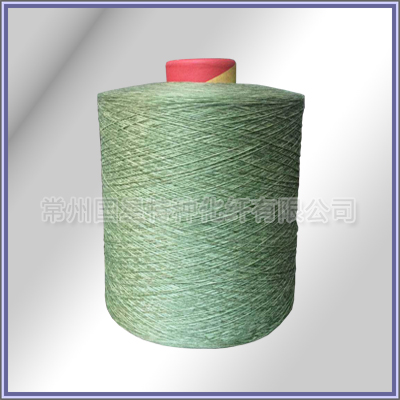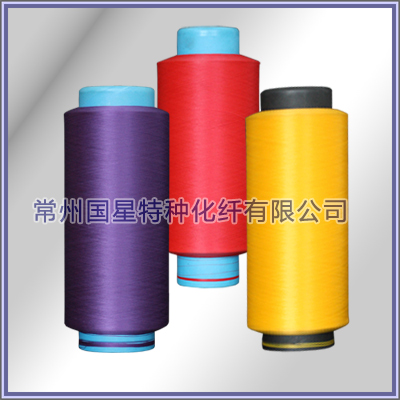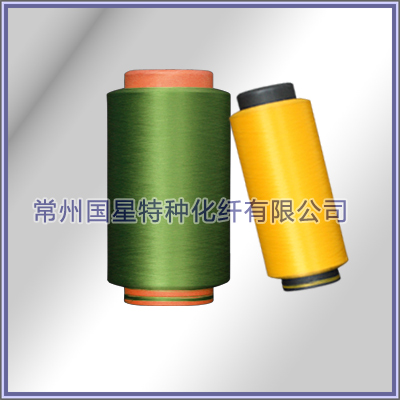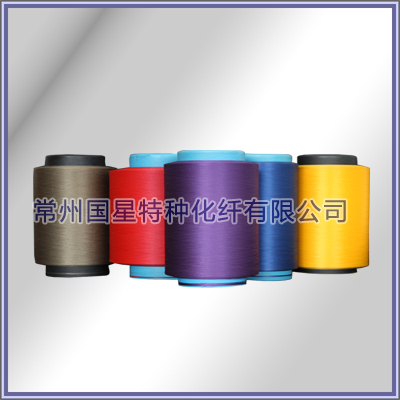Speech at the Second Executive Director of the Fourth China Textile Industry Federation
Sun Ruizhe President of China Textile Industry Federation
October 12, 2017
Distinguished leaders, delegates, delegates:
Hello everyone!
Today, we held the second session of the second session of the executive director of the expansion meeting, which is in the Chinese Communist Party Nineteenth upcoming the occasion of an industry conference, so it is necessary to sum up the results to the nineteenth gift, but also the pulse direction, Looking to the future.
"From the government industrial management departments into industry organizations, China Textile Industry Federation has been constantly exploring the establishment of conform to the trend of the times, in line with the actual industry, with Chinese characteristics, the development of industry organizations model." The end of the platform for the interests of the industry, the transformation of the development of innovative service platform, government decision-making professional support platform for the basic positioning of each work "completion of the tense", based on the intrinsic driving force of innovation, will soon be converted to " Tense "- always on the road, which is the development of the industry to cope with the complex and objective requirements, it is our challenge to self, help industry continues to upgrade a subjective feelings and professionalism.
It can be said that every industry here is "the story of the people". In the past few years, we have experienced the difficulties of organizing the organization, and we have explored the gradual and gradual progress of the business work from the point and the surface. We have faced the complicated and changeable situation of the development of the industry. We have experienced the structural adjustment from above Under the transformation of pain. It is important that these experiences are common to all leaders and colleagues and all my colleagues in the industry. Common experience, is our common possession of the memory assets and wealth of experience, is the value of our accumulated treasure.
Since the 18th National Congress of the CPC, in the face of the complicated international situation and the arduous heavy domestic reform and development tasks, under the leadership of the Party Central Committee with the general secretary of Xi Jinping as the core, the whole country has promoted the overall arrangement and coordination of the "five in one" Comprehensive "strategic layout, innovation and macro-control ideas and ways to adhere to both supply and demand management both sides, and establish a" innovation, coordination, green, open, shared "development concept, to reform to vitality, to innovation to power, economic development Brilliant achievements.
Textile industry as China's traditional pillar industries, important people's livelihood and create new industries of international advantages, since the eighteenth, in the beautification of people's lives, enhance cultural self-confidence, the construction of ecological civilization, promote related industries, stimulate domestic demand growth, promote social harmony And so play an important role. In the international competitiveness, voice and responsibility practice, continue to highlight the value of China's textile industry.
First, the development of the textile industry in five areas made great progress
(A) the economic operation of quality and stability, social and international influence is solid.
1, China's textile industry in the Chinese economy in the position
2012-2016, the textile industry has been steady, has always been an important force in China's economy.
The main business income of the textile industry increased from 6.24% to 6.37%. The proportion of the main business income of the textile industry accounted for 6.34 billion yuan.
The profits of the enterprises increased from RMB301.51 billion to RMB40,053.7 million, and the proportion of the profits of the textile industry increased from 4.9% to 5.8%.
The amount of investment in social enterprises increased from 2.02% to 2.12%. The proportion of investment in social fixed assets increased from 2.02% to 2.12%.
Textile and apparel exports increased from 262.563 billion US dollars to 271.02 billion US dollars, accounting for the proportion of exports in 2012 was 12.81 percent in 2016 to 12.88 percent.
2, China's textile industry in the global position
The total fiber processing volume increased from 45.3 million tons in 2012 to 54.2 million tons in 2016, accounting for 53.91% of the world's total in 2012 and 53.47% in 2016.
According to WTO statistics, 2016 China's textile exports 106 billion US dollars, accounting for the world's textile exports accounted for 37.20%; China's garment exports of 161 billion US dollars, accounting for the proportion of the world's garment exports 36.40%.
(B) the industrial structure tends to be reasonable, industry productivity layout continued to optimize.
The textile industry has implemented the goals and strategies of "Made in China 2025", "Building Textile Powerful Outline (2011-2020)" and "Tenth Five-Year Plan" of the "Textile Industry" to promote the structural reform of the supply side as the main line and optimize Structure, the formation of the development of new kinetic energy, to create a new competitive advantage.
1, the industrial structure has improved steadily
2012-2016, the proportion of fiber processing of apparel, home textiles and industrial textiles was adjusted from 49:29:22 to 45.47: 27.68: 26.75, and the proportion of chemical fiber in the total processing volume of textile fiber increased from 77.2% in 2012 to 84 in 2015 %, Structure is optimized. Among them, the growth of industrial textiles is more prominent, 2016 industrial textile industry with the caliber of industrial output value of more than 1 trillion yuan, up 85.2% over 2010, an average annual growth of 10.8%; fiber processing total 14.5 million tons, compared with 2010 Annual growth of 76.5%, an average annual growth of 9.9%; industry exports amounted to 23.61 billion US dollars, up 105% over 2010, an average annual growth of 12.7%; scale above business profit rate of 6.19%, 1.05 percentage points higher than in 2010.
2, industrial transfer effect is remarkable
Textile industry, the domestic transfer, bear the brunt of the cotton, knitting, clothing industry, Xinjiang and other central and western provinces to become the main land, the provinces have introduced the transfer of industrial guidance or transfer support package support policy. With the deepening of industrial transfer, the central and western regions supporting the industrial chain more prominent, many parks have begun to re-modify the planning, supporting industrial projects to become the focus of planning.
In the period from 2012 to 2016, the investment in the eastern region increased from 455.621 billion yuan to 739.040 billion yuan, up by 62.20 percent; the investment in the central region increased from 262.895 billion yuan to 414.394 billion yuan, an increase of 57.63 percent; the investment in the western region was 60.785 billion Yuan growth to 130.441 billion yuan, an increase of 114.60%.
Domestic industry transfer, Xinjiang's performance is particularly prominent, 2016 Xinjiang regulations on the textile industry to complete the industrial added value of 8.04 billion yuan, accounting for 3.3% of the proportion of industry, compared with 2014 increased by 2 percentage points. As of the end of June 2017, Xinjiang textile and garment production capacity of the rapid growth of cotton spindles to 17.4 million, viscose fiber 850,000 tons, loom 1.8 million units, carpet 1.8 million square meters; clothing sewing equipment to 15 million units. As of the end of June 2017, Xinjiang region for the record of textile and garment enterprises has reached 2525, compared with three years ago, an increase of 1965. From 2014 to the end of June 2017, Xinjiang's textile and garment industry, fixed assets investment reached 113.74 billion yuan, accounting for nearly a quarter of total investment in Xinjiang's industrial sector. From 2014 to the end of June 2017, Xinjiang textile and garment industry, the number of new jobs 284000 people, of which four provinces in southern Xinjiang to achieve new jobs 15.3 million, accounting for 53.7%. The whole industry chain to absorb employment of about 41.4 million people.
2012-2016, the textile industry investment from 540 million US dollars to 2.66 billion US dollars, in the manufacturing sector accounted for the proportion of foreign investment increased from 6.28% to 8.97%. In the foreign layout, Southeast Asia and Africa, land prices, labor costs and policy-oriented advantages, become an important destination for international industrial transfer. Many domestic enterprises, such as Tianhong, Lutai, that is made, Dai silver, sunshine, east and so on in Cambodia, Vietnam, Indonesia, Myanmar, Malaysia, Ethiopia and other countries to build factories. On the other hand, China's textile and garment enterprises through the internationally renowned design, research and development, brand, management and other institutions to achieve the integration of various types of intellectual resources. Many Chinese garment enterprises joined the international brand cooperation and acquisition team, access to the international R & D team, management team, marketing idea and market channels. China's outstanding enterprises are from the "product go out", "capacity to go out" to "global resource integration", "cross-border capital mergers and acquisitions," the historic leap. This is not only the transformation of business methods, but also China's open development process, the domination of the international order of the race.
3, enterprise technological progress significantly, structural adjustment to speed up
Cotton industry, as of 2016, the national automatic winding coverage of 74%, compared with 2011 coverage increased by 10 percentage points; shuttleless loom occupancy rate in 2016 compared to 2010 increased to about 19 percentage points, automatic wear machine The number increased from 30 in 2010 to 2016 in the 430 units, up 1333% over 2010.
Printing and dyeing industry, the gradual elimination of energy consumption, high water consumption, poor stability of the printing and dyeing equipment, 74 type of dyeing and finishing equipment basically eliminated, backward model of flat screen printing machine, hot melt dyeing machine, hot air cloth tenter, short ring drying machine And other high energy consumption, high water consumption of backward production process equipment is gradually being energy saving, water conservation, environmental protection and efficient production equipment replaced.
Garment industry enterprises division of labor has deepened, formed a large enterprise stronger, so excellent, small and medium enterprises do special, so fine, do special industrial ecology. Industrial culture and creativity are becoming more and more active, modern service awareness is increasing, industry knowledge-intensive, technology-intensive features become more apparent. With the clothing as the leading industrial integration innovation system is maturing, cross-industry, cross-regional, cross-cutting collaborative innovation more closely, the industry upstream and downstream integration development accelerated.
4, the outstanding contribution of industrial clusters
Textile industry cluster to actively explore and practice to the innovative, intensive, eco - industrial cluster transformation and upgrading of the road. At present, the textile industry cluster with the establishment of the pilot relationship between the textile industry cluster of 207, located in 21 provinces and autonomous regions, the Yangtze River Delta, the Pearl River Delta, the Hercynian region and the Bohai Sea Delta, including prefecture-level region 11, county Level area 97, town area area 100. According to the statistics of the pilot cluster, the total number of textile enterprises in the cluster in 2016 was 18,518, of which 17249 were enterprises, and the total industrial output value was 4320.618 billion yuan, of which the above-mentioned enterprises were 34395.76 billion yuan; the main business income was 40,689,143 million yuan, Of which the above-scale enterprises for the 32214.04 billion yuan; total profit of 224.214 billion yuan, of which enterprises above designated size 183.299 billion yuan. In 2016, the number of enterprises above designated size accounted for 44.83% of the above-mentioned enterprises, accounting for 44.67% of the main business income and 45.56% of the profits.
By the end of 2016, there are 10 industrial clusters in the pilot area of the main business income over 100 billion yuan, four professional market annual sales of over 100 billion yuan. Cluster economy has become China's textile industry transformation and upgrading and power building an important force.
Clusters in the economy "new normal" under the new features and highlights, mainly in: continue to explore innovative clusters of new models, and constantly improve the industrial chain and professional market support, and actively build regional brand influence, and actively promote technological progress and industry Upgrade the pace, and actively promote the "Internet +" strategy and deepen the integration of two, and actively carry out the construction of cluster public service platform.
Since the 18th century, textile and garment industry cluster on China's national economic development and social progress has made a significant contribution. First, the contribution of the people's livelihood. Cluster enterprises to provide a large number of stable employment opportunities, cluster industry workers up to 742 million people, accounting for 37% of all textile and garment industry workers; industrial clusters were born nearly 200,000 private enterprises. Second, the contribution to market-oriented reform. On the one hand to enhance the ability of regional self-development, on the other hand led the development of non-state economy in other areas. Third, the contribution to the expansion of openness. Many clusters to export-oriented export-oriented model, in terms of increasing foreign trade products has played a very important role. Fourth, the contribution to the local economy. One hundred counties in the country, one-third of the textile and garment industry cluster areas, textile and garment production accounted for the highest proportion of about 80%. Fifth, the contribution to the industrial economy. Cluster economy accounts for more than 40% of the total textile economy, clothing production accounted for half of the country, cotton industry capacity of more than 30%, chemical fiber production of 70%.
(C) rapid technological innovation, industry competitive advantage to obtain connotative development.
The textile industry has made a series of innovative achievements in the fields of fiber materials, textile, dyeing and finishing, industrial textiles, textile equipment and information technology, and has made great achievements in promoting the technological innovation and achievements of the industry in the textile industry. , To achieve the industry-wide key, common technology breakthroughs, industry independent innovation capability, technology and equipment level and product development capabilities as a whole to enhance. 2012 ~ 2016, the industry a total of 17 results by the National Science and Technology Award, which "digital cheese yarn dyeing complete sets of technical equipment" won the national scientific and technological progress award, 643 results by the China Textile Industry Federation Science and Technology Progress Award, A number of provincial and ministerial level science and technology awards. Industry independent technology and the invention patents and utility model patents increased significantly, "second Five-Year" period authorized a total of 145,600 patents, of which about 34,800 patents, compared with "Eleventh Five-Year" period authorized the number of patents increased 164.86% The Mainly in the following eight aspects:
1, fiber materials technology to make new breakthroughs
High-performance fiber research and development and industrialization to achieve a breakthrough. China's carbon fiber, aramid and ultra-high molecular weight polyethylene varieties accounted for one third of the world, China has become the world's high-performance fiber production varieties of the most extensive coverage of the country. The differentiation rate of chemical fiber in 2015 will reach 58%. Bio-based chemical fiber industry, technological innovation, large-scale production capacity, market application capacity greatly improved, key core technology continue to make a major breakthrough.
2, textile products processing technology made new progress
Close spinning, jet vortex spinning, fine network, automatic winding and other textile technology and equipment for the development of high-quality fabric laid the foundation for the new spinning technology in the promotion of wool enterprises to reach 60%; fine printing, digital printing Technology to achieve a greater breakthrough and promote the use of the industry, the computer measured color, automatic distribution of dyeing materials, automatic pulp, on-line testing and other advanced technology applications to further expand.
3, energy-saving emission reduction and resource recycling technology to achieve new results
Low-temperature textile fast pretreatment, printing and dyeing wastewater treatment and reuse of a large number of key technologies such as a breakthrough, small bath than dyeing, flat-type continuous washing and other advanced technology and equipment to promote the use of the ratio to further improve. Printing and dyeing industry unit product water consumption from 2.5 tons / 100 meters down to 1.8 tons / 100 meters, water recycling rate increased from 15% to 30%.
4, industrial textile research and development and processing technology to make new progress
Non-woven technology and equipment level continues to improve, spunbond, melt-blown technology to achieve the diversification of raw materials,

 +86-519-86266888
+86-519-86266888 gxhx888@126.com
gxhx888@126.com



